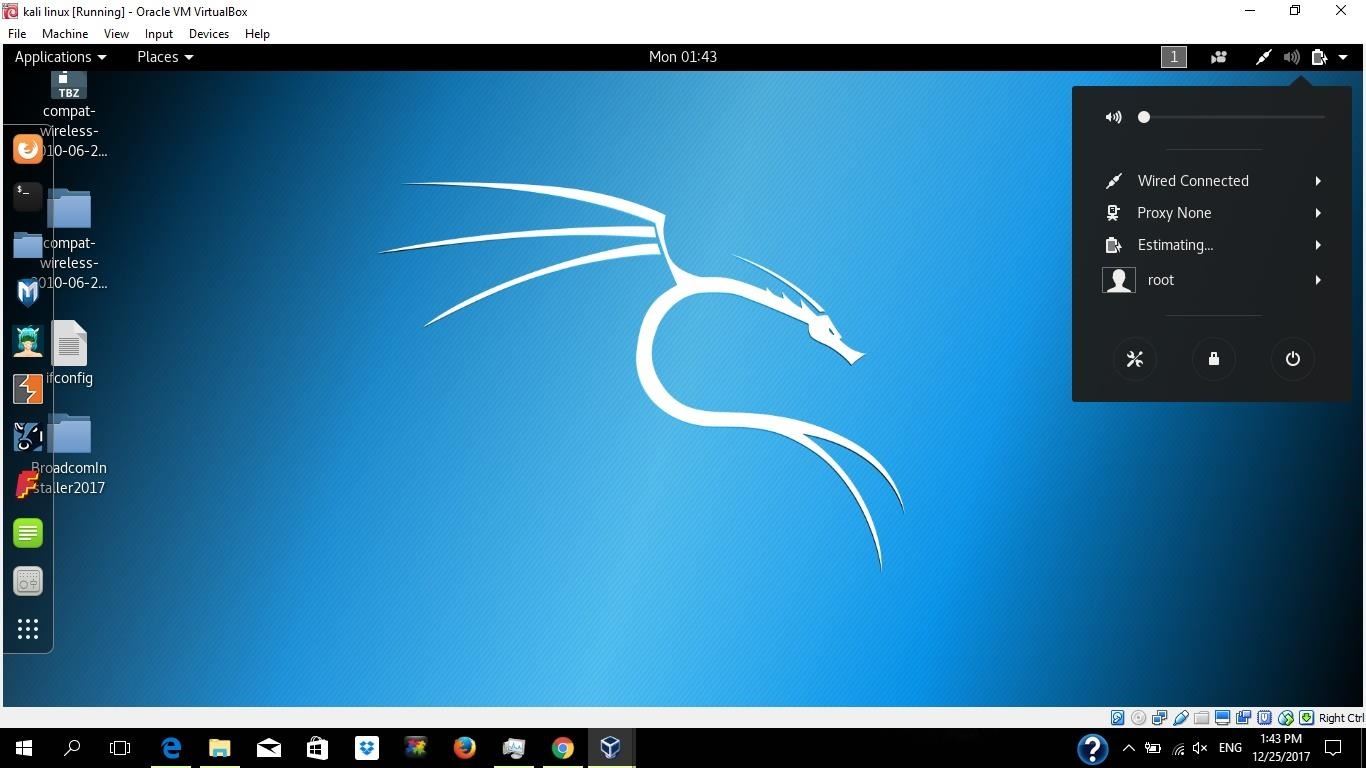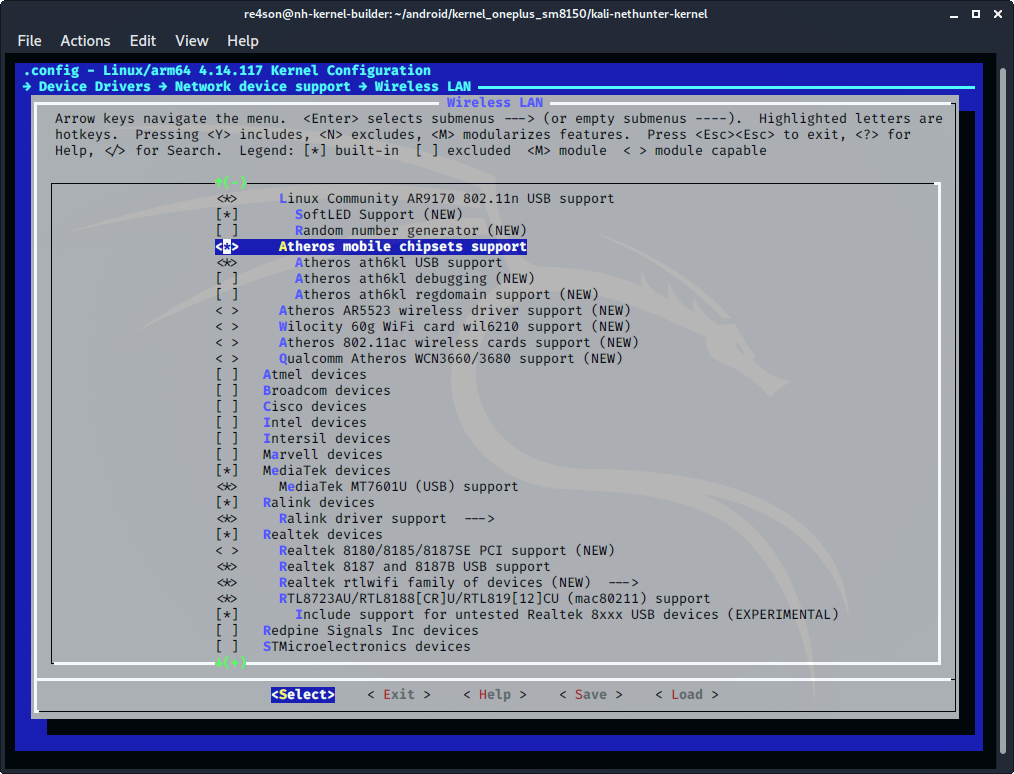

- KALI LINUX HOW TO INSTALL LINUX WIRELESS DRIVER
- KALI LINUX HOW TO INSTALL LINUX WIRELESS UPGRADE
- KALI LINUX HOW TO INSTALL LINUX WIRELESS CODE
- KALI LINUX HOW TO INSTALL LINUX WIRELESS OFFLINE
Also note that the make command is unnecessary since the compilation is done by the DKMS module.Ī reboot may be required for the driver to work.Ĩ814au, 5.8.5.1, 5.9.0-kali2-amd64, x86_64: installedĭKMS reports that the installation is complete and that the status for 8814au is “installed”. This will be done automatically by the DKMS module. Install the driver as a DKMS module – this means that when updating the kernel, you do not have to manually recompile the driver for the new kernel version. Sudo apt install dkms build-essential libelf-dev linux-headers-`uname -r` To install the RTL8814AU driver, run the following commands. How to install the Alfa AWUS1900 (RTL8814AU) driver in Kali Linux If you need it, then do not delete it and check if they will conflict. If you do not need the realtek-rtl88xxau-dkms driver (now supports RTL8812AU/21AU chipsets), then uninstall it: But now RTL8814AU chipset support is disabled in the realtek-rtl88xxau-dkms driver! A separate driver has been made for this chipset, which may conflict with RTL8814AU! These changes are recent, so the old instructions for installing the driver for the Alfa AWUS1900 do not work. Previously, the realtek-rtl88xxau-dkms driver had support for the RTL8814AU chipset and for these wireless cards to work, it was enough to install the specified driver – on Kali Linux this could be done directly from the default repository, on other distributions it had to be compiled. The best on this list is the Alfa AWUS1900. They are especially loved by those who perform wireless security testing of Wi-Fi networks, since they are modern wireless adapters that support monitor mode and can perform wireless injections. The RTL8814AU chipset has the following W-Fi adapters:
KALI LINUX HOW TO INSTALL LINUX WIRELESS OFFLINE
If you’re used to compiling from source, these are new directories, which match the standard locations for system packages.See also: How to install Wi-Fi driver in Linux if the computer is offline The Kismet packages install Kismet and the capture tools into /usr/bin/, and the configuration files into /etc/kismet/.
KALI LINUX HOW TO INSTALL LINUX WIRELESS CODE
These versions are generally tagged to allow a consistent installation version from code that should be known-good. The release version is build from the latest release tag, or the latest beta tag. The git version is generally fine to use, but is not recommended for installations that need consistency or long-term support. These builds take the latest git version and compile it - this version has all the absolutely latest features, but also is the most likely to have new, exciting bugs. If you’d like to be on the cutting edge of testing, you can pull Kismet from nightly git builds.
KALI LINUX HOW TO INSTALL LINUX WIRELESS UPGRADE
Once you have switched to using the Kismet packages here, you should be able to upgrade with the standard distribution tools.

$ sudo rm -rfv /usr/local/bin/kismet * /usr/local/share/kismet * /usr/local/etc/kismet * Remove any Kismet installed from sourceīefore you switch to using packages, you will need to remove any Kismet versions installed from source. More are being added over time, and your distribution may already have modern packages (Pentoo, for instance). There are automatically-built repositories for Kismet on several Linux distributions. These repositories contain the latest Kismet versions, which may not be available in the standard repositories for your distribution distributions typically pick up new releases at relatively long intervals, and will not include git or beta versions in the official packages.


Debian / Raspbian Buster (Intel, Raspberry Pi).Remove any Kismet installed from source.


 0 kommentar(er)
0 kommentar(er)
